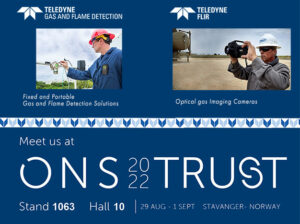To ensure all medicines are produced to the highest quality, pharmaceutical manufacturers around the world are subjected to strict regulations. The problem is, monitoring the conditions in a manufacturing facility 24/7 requires high-end, often costly networking technology. Here Ian Loudon, international sales and marketing manager at remote monitoring instrumentation manufacturer Omniflex, discusses how temperature monitoring systems can be cost effective, reliable and compliant with regulatory standards.
Installing devices for electronic record keeping — for example, temperature sensors that monitor laboratory conditions — can be an expensive process. Companies previously opted for manual auditing on paper records, rather than overhauling a laboratory’s electrical infrastructure, because the latter can be expensive both in installation costs and laboratory downtime.
However, the FDA’s standard operating procedures for Good Laboratory Practice (GLP) now dictate that 24/7 data logging of lab conditions, including temperatures, is necessary to ensure compliance. Some study grants even require that records be kept in a 21 CFR Part 11 compliant system, which means access to electronic records is limited to authorised individuals, reducing the risk of data manipulation.
So, can you be compliant without spending lots of money?
A financial trade-off
It’s true that your temperature sensors will only gather data from one point in a room, fridge or freezer. Therefore, for a clearer representation of the temperature conditions in a laboratory, you may need multiple sensors installed throughout. This can be costly, particularly if you are monitoring a large facility.
Many technicians choose to monitor temperatures readings manually, using a clipboard and spreadsheet. However, manual methods rely on staff constantly being onsite, placing unnecessary pressure on them as they juggle maintaining laboratory conditions and fulfilling their normal responsibilities. Furthermore, manual record keeping can only reflect conditions at the time of reading. Staff are unable to immediately identify problems that arise between recording intervals.
For example, if the temperature of a fridge were to fluctuate while a lab is unmanned, valuable research assets being stored could become comprised. Pharmaceutical companies may then find themselves paying the price of larger labour costs to replicate experiments, as well as the costs of wasted research materials. In a worst-case scenario, if they are not complying to GLP, they could be financially liable. Therefore, companies must be cost-effectively keeping records that are reliable, compliant and cannot be manipulated.
Monitoring made simple
Temperature monitoring systems can be cost-effective, easy to configure and install onsite and have a wide temperature coverage. For example, manufacturers can place plug-in sensors around a laboratory, in dry storage, fridges and freezers for continuous data recording. Using a cloud-based network, one DIN rail mounted controller can support up to 80 sensors, which feeds the data back to a temperature monitoring station.
An example of this set up is the Teleterm mLC8 mounted controller networked to Omniflex’s microLAN system. Each mLC8 device has eight microLAN ports, each one capable of sharing a two-wire cable for supporting ten sensors. Because wiring is kept to a minimum, installation is easy, non-disruptive and can be fitted into the existing infrastructure.
This technology is more cost-effective and efficient than manual equipment monitoring, helping companies save on manual labour and reducing the risk of damaging research materials. However, to be fully compliant to FDA 21 CFR Part 11, which suggests any manual recordings could be manipulated, pharmaceutical companies must consider archiving chronology of all operating parameters.
For remote temperature monitoring, Omniflex’s Data2Desktop system provides this. Installed using GSM services, Data2Desktop records a 24/7 repository of temperature data that users can access remotely through standard web browsers with designated logins for auditing or post-event analysis. The system can also send out real-time SMS or email alerts in the event of an abnormal temperature variation to help protect critical research assets.

 Instrumentation Monthly Test | Measurement | Control
Instrumentation Monthly Test | Measurement | Control








